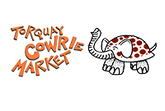Bark with Buster Back @ Cowrie Torquay Market 2025/2026 – Tasty Samples Await!
5 Reasons Aussie Dog Treats Are Best
Kennel Cough in Australia: 5 Vital Facts Every Dog Owner Needs To Know
5 Ways Dogs Absorb Your Emotions
10 Most Legendary Dogs in History
Pet Travel Australia: 5 Game-Changing Perks on Virgin Australia
Dog Adoptions Are Booming — Why Aussie Rescues Are Still Struggling
Australian Made Natural Dog Treats: 7 Health Reasons to Switch from Imports
Kangaroo Meat for Dogs: 7 Powerful Reasons It’s a Top Choice



























